The human adenocarcinoma-associated gene, AGR2, induces expression of amphiregulin through Hippo pathway co-activator YAP1 activation
- PMID: 21454516
- PMCID: PMC3093902
- DOI: 10.1074/jbc.M110.215707
The human adenocarcinoma-associated gene, AGR2, induces expression of amphiregulin through Hippo pathway co-activator YAP1 activation
Abstract
Anterior Gradient Homolog 2 (AGR2) is expressed by the normal intestine and by most human adenocarcinomas, including those derived from the esophagus, pancreas, lung, breast, ovary, and prostate. Xenografts of human adenocarcinoma cell lines in nude mice previously demonstrated that AGR2 supports tumor growth. In addition, AGR2 is able to induce in vitro a transformed phenotype in fibroblast and epithelial cell lines. The mechanism underlying the growth promoting effects of AGR2 is unknown. The present study shows that AGR2 induces expression of amphiregulin (AREG), a growth promoting EGFR ligand. Induced AREG expression in adenocarcinoma cells is able to rescue the transformed phenotype that is lost when AGR2 expression is reduced. Additional experiments demonstrate that AGR2 induction of AREG is mediated by activation of the Hippo signaling pathway co-activator, YAP1. Thus AGR2 promotes growth by regulating the Hippo and EGF receptor signaling pathways.
© 2011 by The American Society for Biochemistry and Molecular Biology, Inc.
Figures

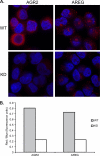



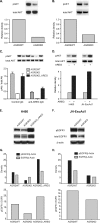
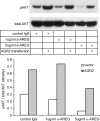
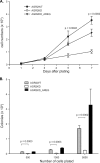

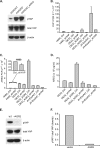
Similar articles
-
YAP-dependent induction of amphiregulin identifies a non-cell-autonomous component of the Hippo pathway.Nat Cell Biol. 2009 Dec;11(12):1444-50. doi: 10.1038/ncb1993. Epub 2009 Nov 22. Nat Cell Biol. 2009. PMID: 19935651 Free PMC article.
-
RASSF1A-mediated regulation of AREG via the Hippo pathway in hepatocellular carcinoma.Mol Cancer Res. 2013 Jul;11(7):748-58. doi: 10.1158/1541-7786.MCR-12-0665. Epub 2013 Apr 17. Mol Cancer Res. 2013. PMID: 23594797
-
AGR2 gene function requires a unique endoplasmic reticulum localization motif.J Biol Chem. 2012 Feb 10;287(7):4773-82. doi: 10.1074/jbc.M111.301531. Epub 2011 Dec 19. J Biol Chem. 2012. PMID: 22184114 Free PMC article.
-
Amphiregulin as a novel target for breast cancer therapy.J Mammary Gland Biol Neoplasia. 2008 Jun;13(2):171-9. doi: 10.1007/s10911-008-9081-9. Epub 2008 Apr 25. J Mammary Gland Biol Neoplasia. 2008. PMID: 18437539 Review.
-
The type 1 (EGFR-related) family of growth factor receptors and their ligands.Prog Growth Factor Res. 1992;4(1):1-24. doi: 10.1016/0955-2235(92)90002-y. Prog Growth Factor Res. 1992. PMID: 1355372 Review.
Cited by
-
Immunohistochemical panel for distinguishing esophageal adenocarcinoma from squamous cell carcinoma: a combination of p63, cytokeratin 5/6, MUC5AC, and anterior gradient homolog 2 allows optimal subtyping.Hum Pathol. 2012 Nov;43(11):1799-807. doi: 10.1016/j.humpath.2012.03.019. Epub 2012 Jun 28. Hum Pathol. 2012. PMID: 22748473 Free PMC article.
-
Amphiregulin enhances alpha6beta1 integrin expression and cell motility in human chondrosarcoma cells through Ras/Raf/MEK/ERK/AP-1 pathway.Oncotarget. 2015 May 10;6(13):11434-46. doi: 10.18632/oncotarget.3397. Oncotarget. 2015. PMID: 25825984 Free PMC article.
-
Transcriptional Response of Ovine Lung to Infection with Jaagsiekte Sheep Retrovirus.J Virol. 2019 Oct 15;93(21):e00876-19. doi: 10.1128/JVI.00876-19. Print 2019 Nov 1. J Virol. 2019. PMID: 31434729 Free PMC article.
-
AGR2, an endoplasmic reticulum protein, is secreted into the gastrointestinal mucus.PLoS One. 2014 Aug 11;9(8):e104186. doi: 10.1371/journal.pone.0104186. eCollection 2014. PLoS One. 2014. PMID: 25111734 Free PMC article.
-
Anterior gradient proteins in gastrointestinal cancers: from cell biology to pathophysiology.Oncogene. 2022 Oct;41(42):4673-4685. doi: 10.1038/s41388-022-02452-1. Epub 2022 Sep 6. Oncogene. 2022. PMID: 36068336 Review.
References
Publication types
MeSH terms
Substances
Grants and funding
LinkOut - more resources
Full Text Sources
Research Materials
Miscellaneous

